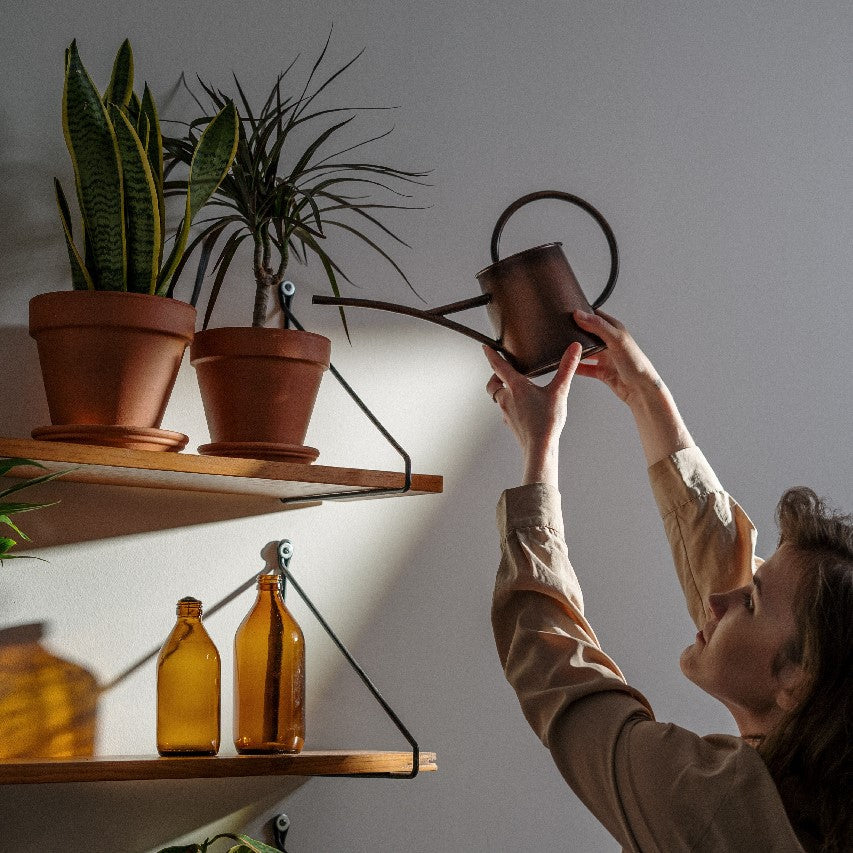
Succulents are known for being nearly impossible to kill. We often hear about how they need very little moisture, and how succulent care relies mostly on neglect.
Succulents can make indoor spaces brighter, more inviting, and simply more charming. Add to this the fact that they’re incredibly easy to care for, and you have the essential ingredients for a succulent craze.
While these plants are usually hassle-free, overwatering or underwatering can pose issues...
Are you concerned about overwatering or underwatering your succulents?
If you have succulents in your home, then you might be startled to see browning leaves, black spots, and wrinkled foliage. These are signs of overwatering and underwatering.
As a green parent, you probably want your houseplants to be strong and flourishing, so when these unsightly symptoms pop up, you might become alarmed.
We recommend using a soak and dry method when watering succulents. When watering, you should completely soak your plant. Then, after waiting two weeks, check to see if the soil is dry. If it is, then you can water your succulent again. Avoid drenching if the succulent soil is still moist. By following this method, you can make sure your plant gets just the right amount of hydration.
There are a few differences between overwatered vs. underwatered succulents. We’ve included some of them below and also added helpful tips for saving your plant from these watering issues. Continue reading to find out more!
Overwatered Succulents
Overwatering is one of the most common reasons that succulents die. Since these plants store moisture in their thick leaves and stems, you don’t need to water them often. If your green friends start looking sick, they might be feeling moisture overload. Here are some signs to watch out for:
Mushy foliage
Discolored, drooping leaves
Rotting roots
Saving Overwatered Succulents
If you notice your succulents showing signs of excess hydration, there are a few ways to save them from wilting.
Air-dry the roots
Use new succulent soil
Increase drainage
Underwatered Succulents
Overwatering is a common reason that succulents die, but these plants shouldn’t be underwatered either. Succulents can survive with minimal water, but they still shouldn’t be completely deprived of hydration. These are signs that your succulents are dehydrated:
Wrinkled, shrivelled leaves
Flimsy, browning leaves
Aerial roots
Saving Underwatered Succulents
To save an underwatered succulent, the first thing you should do is water it! Don’t just lightly mist the ground of the pot. Use a watering can or cup and generously drench the soil. Be careful not to wet the leaves, as this can lead to rot. Add enough water so that it seeps out of the drainage holes. After a few days, your plant should look healthy again.
When the soil completely dries out (typically after two weeks), you can water the plant again and follow a regular watering routine. To avoid underwatering your plant, you can use a watering schedule. Track the number of times you water your succulent in a month. You can even set reminders using your phone or an app. Remember to let the soil dry between waterings. Once you find the right rhythm, your plant will be good to go again!


